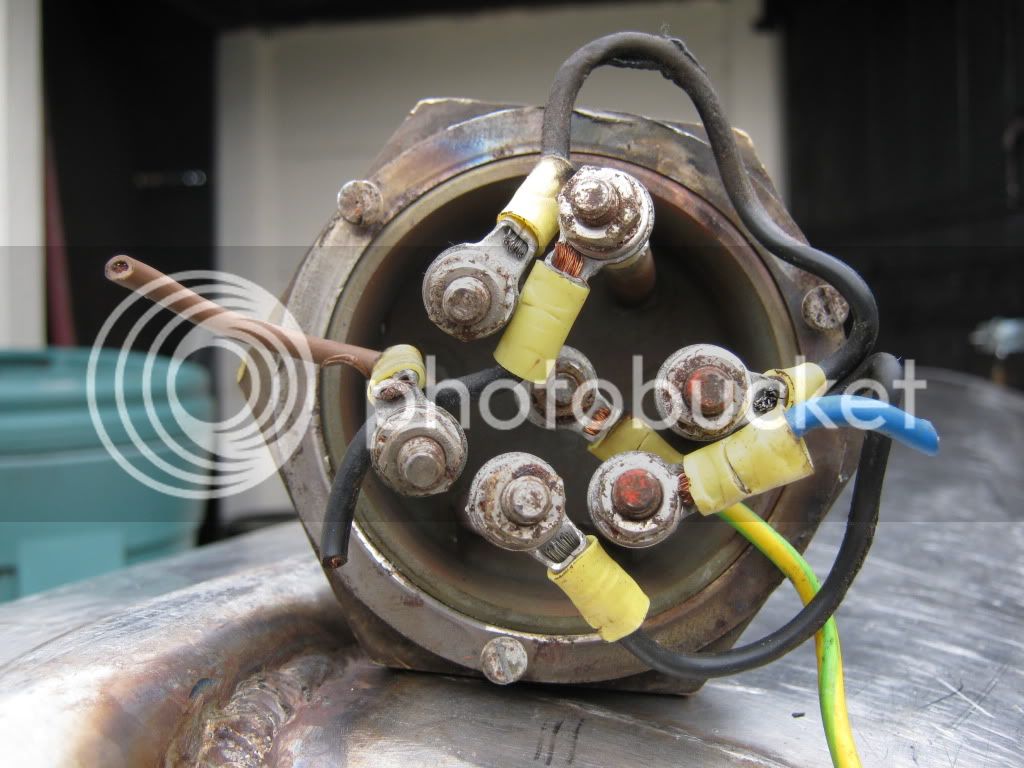i have been thinking about building a RIMS for sometime amd have decided to get on with it.
about 10 years ago i bought a second hand milk pasteuriser for a project which never got off the ground. it seemed sensible to have a look at the parts, some of which i have robbed over the years, to see if anything was usable.
looking at it now the pasteuriser appears to work on the HERMs principle rather than the RIMs but i am hoping that i can convert it. there is avery nice heavy duty ss tube which houses 3 heating elements which i think total 9kw and are 3ph. my plan is to replace them with a low density heating element, though i am struggling to find one at the moment. the process controller box contains a gulton west 3300 which i hope is a pid of some sort and various relays. there is a basic thermostat for the tube and 2 more advanced probes in the pipe lines, one of which broke on removal. there is also a lead to a pump, heater and a 3 way valve.
i am hopeful that i can use the ss heavy duty tube, although it rather larger than i need being approx 600mm long. but i am not sure whether the controllers will be any use. can anyone advise me please? i will try to put som photos up if anyone is interested.
thanks
mark
about 10 years ago i bought a second hand milk pasteuriser for a project which never got off the ground. it seemed sensible to have a look at the parts, some of which i have robbed over the years, to see if anything was usable.
looking at it now the pasteuriser appears to work on the HERMs principle rather than the RIMs but i am hoping that i can convert it. there is avery nice heavy duty ss tube which houses 3 heating elements which i think total 9kw and are 3ph. my plan is to replace them with a low density heating element, though i am struggling to find one at the moment. the process controller box contains a gulton west 3300 which i hope is a pid of some sort and various relays. there is a basic thermostat for the tube and 2 more advanced probes in the pipe lines, one of which broke on removal. there is also a lead to a pump, heater and a 3 way valve.
i am hopeful that i can use the ss heavy duty tube, although it rather larger than i need being approx 600mm long. but i am not sure whether the controllers will be any use. can anyone advise me please? i will try to put som photos up if anyone is interested.
thanks
mark




